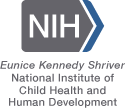USA 2007
This information has been created by the Centre for Time Use Research at the University of Oxford
| Sample description | |
|---|---|
| Country: | USA 2007 |
| Study title: | American Time Use Survey |
| Collector: | United States Bureau of Labor Statistics, Department of Labor |
| When conducted: | Conducted continuously throughout each year |
| Sampling method and study design: | This study monitors what people across the USA are doing on any given day. The ATUS is a national sample of adults aged 15 or older in private households (not nursing homes or institutions), and is drawn from a stratified three-stage random sub-sample of households that have completed the 8th and final wave of the Current Population Survey (CPS). The diary wave takes place around two months after the final CPS interview. While largely similar to the first year of the ATUS, budget cuts required the reducation in the sample size from 2004. Some minor amendments have been made to the code frame each year. From 2005, the codes assigned to the travel activities were renumbered. From 2006 to 2008 the ATUS also includes an Eating and Health module and can be used to analyze the relationships among time use and eating patterns, and nutrition, obesity, grocery shopping, and food preparation. The diaries were collected from one person per household about the day before the interview (yesterday) using computer assisted telephone interviewing (CATI). Participants were assinged to complete a diary for a particular day of the week. If people were sampled for a Monday and could not complete the diary on the first Monday of attempted contact, then the interviewers tried to call again for information about another Monday. The interviewers tried to contact people for 8 weeks. Half of the diaries were collected on weekend days, and half on week days. Respondents were contacted by mail with information about the study before being phoned for the diary interview. Around 5% of CPS households did not have a phone. These households are included. People in households with no phone were sent phone cards to enable them to call the survey without charge. Interviews were conducted in English and Spanish. The study collects one 24-hour diary from participants. Interviewers recorded activities in respondent's own words. The diaries started at 4AM, and respondents told the interviewer the time that they started and stopped each activity. The diary collected main activity only (only secondary child care, but no other secondary activities), who else was present, and location/mode of transport. If people were working, they were then asked which activities from the diary day were done for their main job or for another job, and also which activities were activities they were paid to do. Also, for those people who looked after a child aged <13 on the diary day, respondents were asked to indicate during which activities a child aged <13 was in their care (paid work, sleep and grooming excluded). Eating and Health module respondents also reported time in secondary eating (2006-2008) and secondary drinking (2006-2008). The software and the interviewers used some diary information to fill in some gaps - for instance to note that an activity was travel is the diarist reported a mode of transport but no activity. |
| Sample size: | 12,248 time diary data respondents |
| Response rate: | 52.5% |
| Weighting procedures: | The data include weights which adjust for oversampling of some groups, adjust for non-response, and balance the days of the week. The weights also inflate to the size of the national population. |
| Sources of information: | Bureau of Labor Statistics |
| Available documentation: | Questionnaire User guide |





